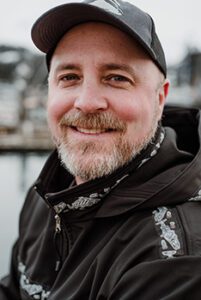

“I was on my own, 13 miles outside of town. I fed them, cleaned the pen, repaired their habitat and helped with collecting eggs. I really fell in love with the seasonal nature of salmon work in Alaska,” said Sheridan, 48, of Cordova, Alaska. “I came from a pretty modest working-class background. Extravagant travel to a place like Alaska wasn’t possible. That experience started an extraordinary path, and it’s been an incredible journey.”
What was supposed to be a four-month stint turned into a career working at salmon hatcheries and calling Alaska home. After staying in Alaska, Sheridan would later meet his future wife and start a family. During the pandemic, Sheridan stepped down from his position at the largest salmon hatchery in North America to homeschool his children.


At the same time, his wife continued to work as a nurse for the local Tribe. Today, Sheridan is the associate director for the Alaska Blue Economy Center at the University of Alaska – Fairbanks and was named to the 19-member Alaska Salmon Research Task Force earlier this year.
“I can’t imagine my life without the SCA. It’s amazing to think about what this kid from Florida who came to Alaska and who lived in a travel trailer has been able to do,” said Sheridan, also a member of the SCA Alumni Council. “I have been able to do all these incredible things and wish that opportunity for others. I am so very grateful to the SCA.”
The SCA offers young people from all walks of life the opportunity to learn and grow in the field of conservation. You can help with a donation to the Student Conservation Association.